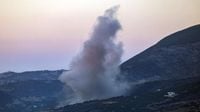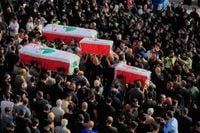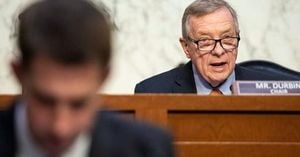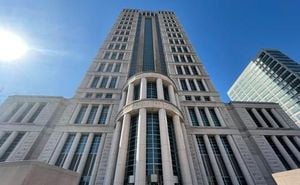Ten months after a much-heralded ceasefire sought to halt the bloody conflict between Israel and Hezbollah, the United Nations has confirmed a grim statistic: at least 103 civilians have been killed in Lebanon since the truce took effect in November 2024. The UN’s call for renewed efforts to end the violence comes as Israeli airstrikes and drone attacks continue to batter southern Lebanon, leaving thousands displaced and civilian infrastructure in ruins.
According to the UN Office of the High Commissioner for Human Rights, the civilian death toll in Lebanon has continued to rise, despite the ceasefire that officially ended over a year of hostilities—including two months of open war—between Israel and the Iran-backed Hezbollah. On October 1, 2025, the UN Human Rights Office marked the ten-month anniversary of the ceasefire by urging all parties to recommit to peace and protect civilians from further harm.
“We are still seeing devastating impacts of jet and drone strikes in residential areas, as well as near UN peacekeepers in the south,” said Volker Türk, the UN High Commissioner for Human Rights, in a statement reported by multiple outlets including the Associated Press and LBCI. He emphasized that the ongoing violence has left families unable to rebuild their homes or lives. “Families are simply unable to make a start on rebuilding their homes and their lives, and instead are faced by the real and present danger of more strikes.”
The ceasefire, brokered by the United States in late November 2024, was intended to put an end to a 14-month conflict that had started in October 2023. The war was triggered when Hezbollah began firing rockets across the border a day after a Hamas-led incursion into southern Israel, which itself sparked the war in Gaza. Israel responded with shelling and airstrikes on Lebanon, leading to a rapidly escalating conflict that became a full-blown war by late September 2024. According to the World Bank, the war killed more than 4,000 people in Lebanon—including hundreds of civilians—and caused an estimated $11 billion in destruction. In Israel, 127 people died, including 80 soldiers.
Despite the ceasefire, Israeli strikes on Lebanese territory have persisted on a near-daily basis. The Israeli military has consistently claimed these operations target Hezbollah operatives or infrastructure. However, the human cost has been severe. The UN has verified that, since the ceasefire, there have been no reported fatalities in Israel from projectiles launched from Lebanon, highlighting the asymmetry of civilian harm during this period.
Recent incidents have drawn particular scrutiny. On September 21, 2025, an Israeli drone strike in the border area of Bint Jbeil killed five people, including three children. Volker Türk demanded an independent and impartial investigation into this incident, as well as others that, he said, “raise concerns about compliance with international humanitarian law.” Then, on October 1, 2025, another Israeli drone strike hit a car in the southern Lebanese village of Kafra, killing one person and wounding five, according to Lebanon’s health ministry. It was not immediately clear whether the casualties were civilians, but the pattern of attacks in residential areas has alarmed humanitarian observers.
“At all times during the conduct of hostilities, civilians and civilian infrastructure must be protected and international humanitarian law fully respected, irrespective of claims of breaches of a ceasefire,” Türk insisted. He also stressed, “Good faith implementation of the ceasefire is the only path towards a durable peace, and its terms need to be respected.”
The toll of the ongoing violence extends far beyond the immediate loss of life. More than 80,000 people remain displaced in Lebanon due to the conflict, the UN reports, with entire communities unable to return home because of the risk of renewed strikes and the widespread destruction of infrastructure. Schools, health facilities, and places of worship—hundreds of them—are described by the UN as “no-go zones, or at best, only partly useable.” Meanwhile, about 30,000 people from northern Israel are also reportedly still displaced, a stark reminder that the region’s wounds are far from healed.
The UN’s findings are echoed by Lebanon’s health ministry, which reported the casualties from the October 1 drone strike. The ministry did not specify whether the victims were civilians, but the incident fits a broader pattern of strikes impacting non-combatants. The UN’s documentation, verified through multiple sources including the Associated Press and local Lebanese media, leaves little doubt about the continued suffering of civilians in the crossfire.
For many Lebanese, the promise of the 2024 ceasefire has proven elusive. The persistent airstrikes have not only claimed lives but also stymied any effort to rebuild. The UN Human Rights Office has repeatedly warned that without a genuine commitment to the ceasefire’s terms, the cycle of violence and displacement will persist. “Hundreds of damaged schools, health facilities, places of worship, among other civilian sites, are still no-go zones, or at best, only partly useable,” Türk noted.
Israel, for its part, maintains that its military actions are necessary to prevent Hezbollah from rearming or launching attacks. Yet, the UN’s verified data points to a stark imbalance in civilian casualties since the ceasefire, with Lebanese civilians bearing the overwhelming brunt of the continued hostilities. The absence of reported Israeli civilian deaths from Lebanese projectiles since November 2024 underscores this disparity.
Calls for accountability have grown louder, particularly in the wake of incidents like the Bint Jbeil drone strike. The UN has pressed for independent investigations to ensure that international humanitarian law is upheld and that those responsible for unlawful attacks are held to account. Such demands, however, have so far yielded little in the way of concrete action or justice for victims.
As the conflict grinds on, the broader regional context remains fraught. The 2023-2024 war, which erupted in the shadow of the Gaza conflict, left Lebanon’s already fragile economy in tatters. The World Bank’s estimate of $11 billion in destruction only hints at the long-term challenges facing recovery. With tens of thousands of people still displaced and basic infrastructure shattered, the prospects for peace and stability seem distant.
The UN’s renewed appeal for a durable truce and respect for civilian lives comes at a critical juncture. As the ceasefire’s anniversary passes with little sign of lasting calm, the international community faces a stark choice: redouble efforts to enforce peace and protect the innocent, or risk further entrenching a cycle of violence that has already cost far too much. For the people of southern Lebanon—and for all those displaced on both sides of the border—the stakes could not be higher.





